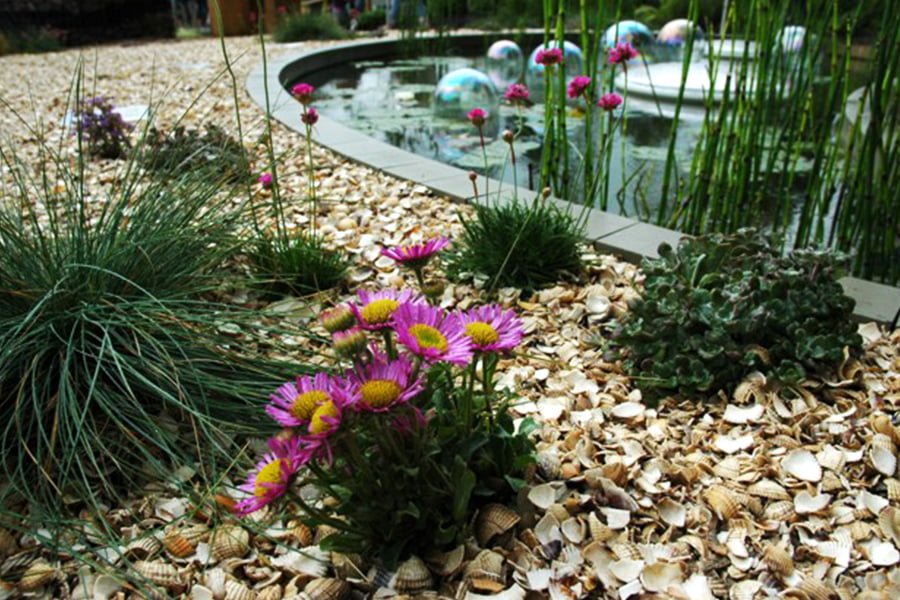
Aside from companywide offsetting, TEP’s Landscape Design team tackles climate change in a number of ways, as well as continually seeking new and innovative solutions to implement into their designs.
For instance, our Landscape Architects use recycled and sustainably sourced materials in their hard landscaping and specification of furniture and play equipment. They also collaborate with companies that use UK timber and stone to make inventive natural play opportunities, which they enhance with playful topography, mounds and rolling landscapes, to create innovative low-carbon footprint spaces for children to play.
They incorporate sustainable drainage systems (SuDS) into their designs to counteract fluctuations in precipitation, droughts and reduced groundwater recharge. Recent projects, including Cromwell Road in Cambridge, have used rain gardens, swales and permeable paving to enhance infiltration of rain back into the ground, rather than diverting it directly into drains.
Urban landscapes, with their surfaces of hard materials, stone, asphalt and the like, create a ‘heat-island’ effect, as they absorb more heat during the day than natural surfaces. Our Landscape designers help mitigate this heat-island effect which commonly occurs in our densely packed towns and cities. Our designers look to maximise the overall green surface area in their projects to meet local targets, such as London’s Urban Greening Factor, and reduce the urban heat-island effect. Maximising green surface area also has the added benefit of increasing carbon sequestration.
Incorporating opportunities for residents to grow their own food has featured more in the designs of our projects. For instance, our designers included growing beds and orchards as part of the design for Barton Park, and helped to improve food sustainability while encouraging people to socialise.
Our Landscape Designers always look for ways to enhance biodiversity. Two of the major impacts of climate change they come across are changes in species’ habitats and abundance. To counter this, they specify planting that supports biodiversity and make sure they include plentiful native trees and hedgerows. In a recent planning submission for a residential project in Norwich, our designers included planting to enhance riparian habitats along the River Wensum, and insect hotels that would support the invertebrate population that provides food for local bats.
To discover how our other teams are contributing to climate action follow the links the below:
Environmental Planning
GIS
Ecology
Arboriculture
Landscape Management
or to get in touch about your landscape and urban design queries, please email design@tep.uk.com








